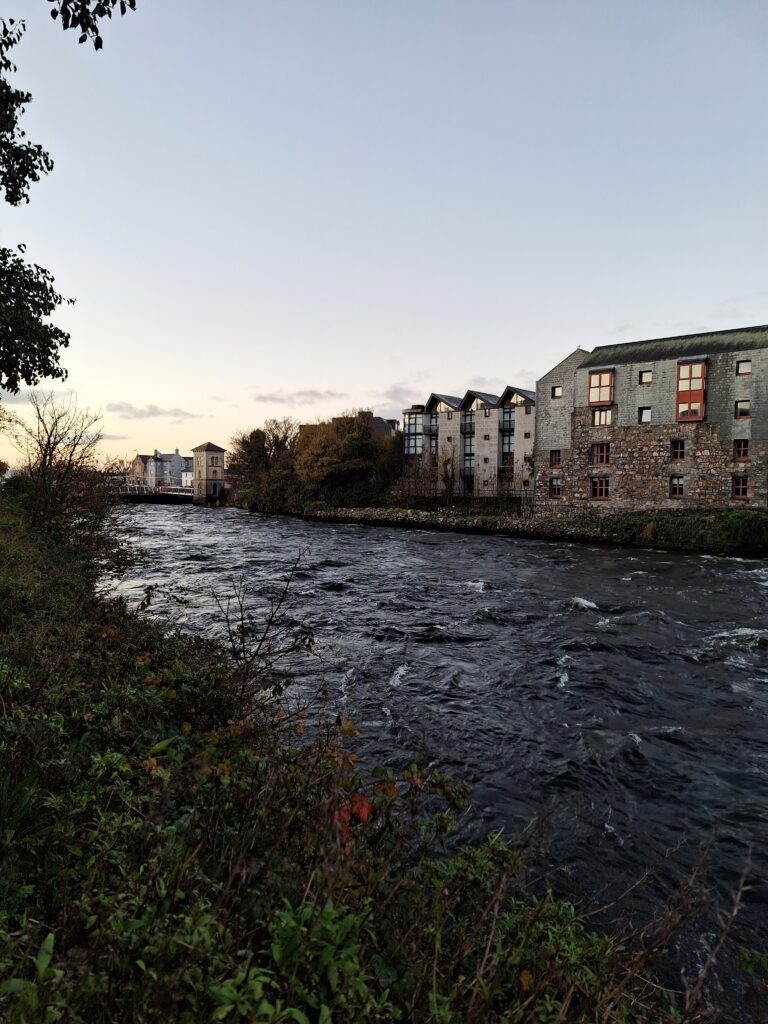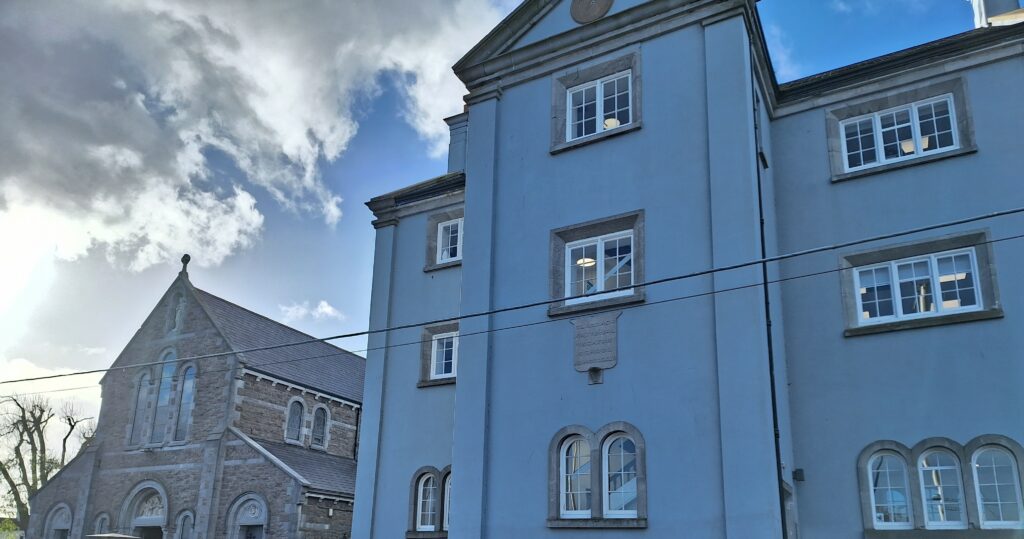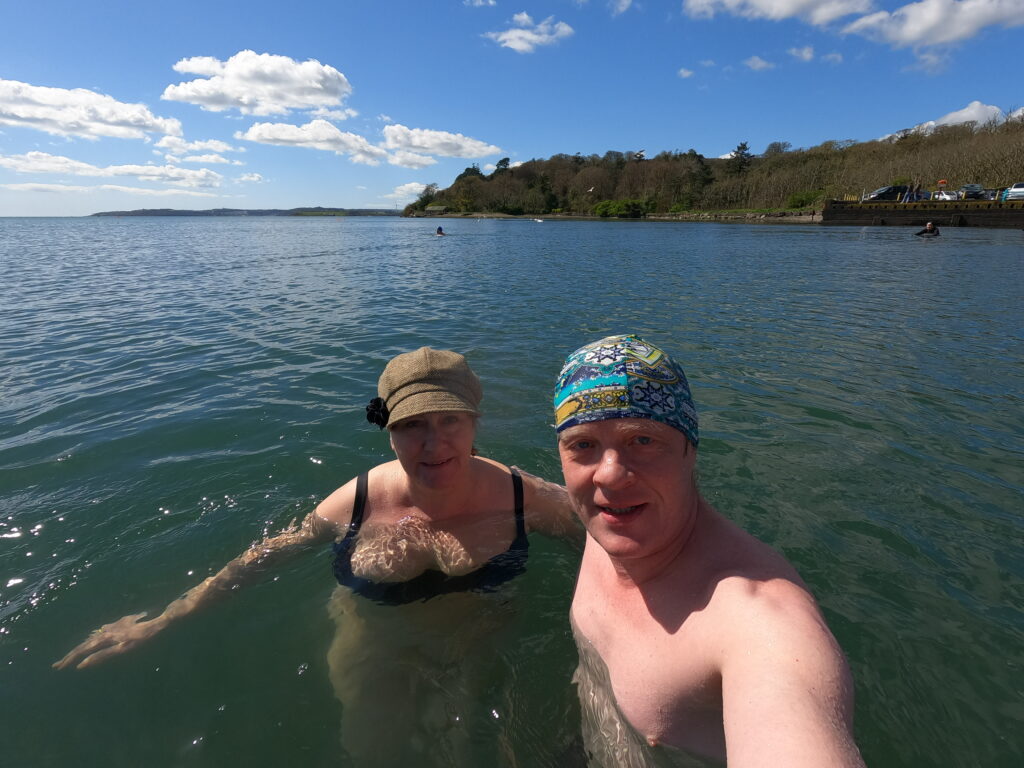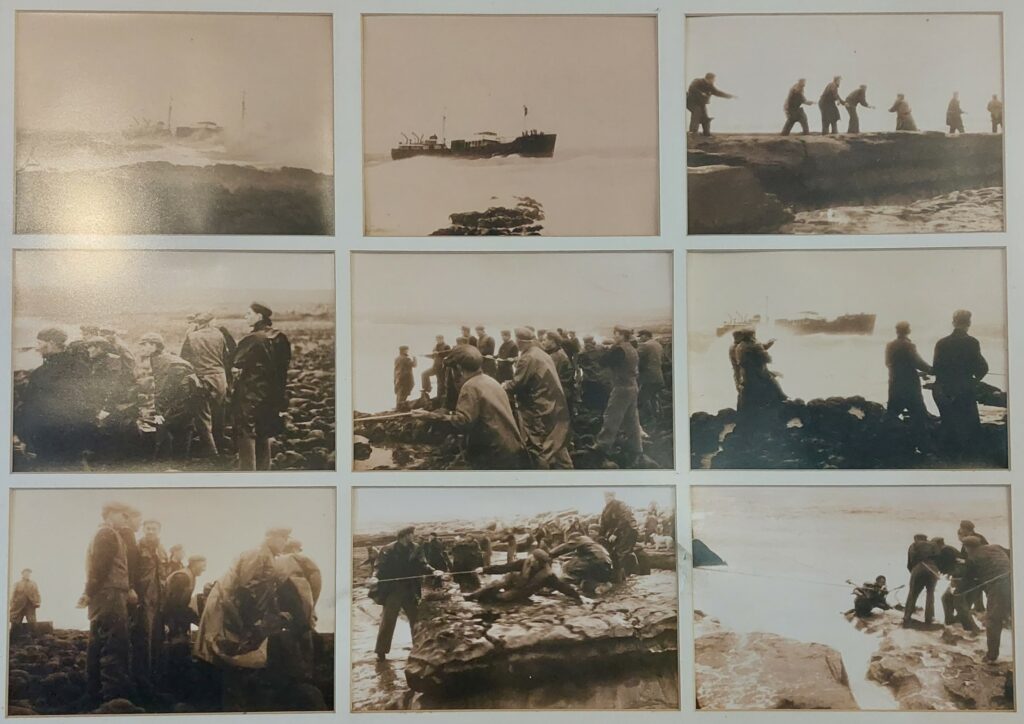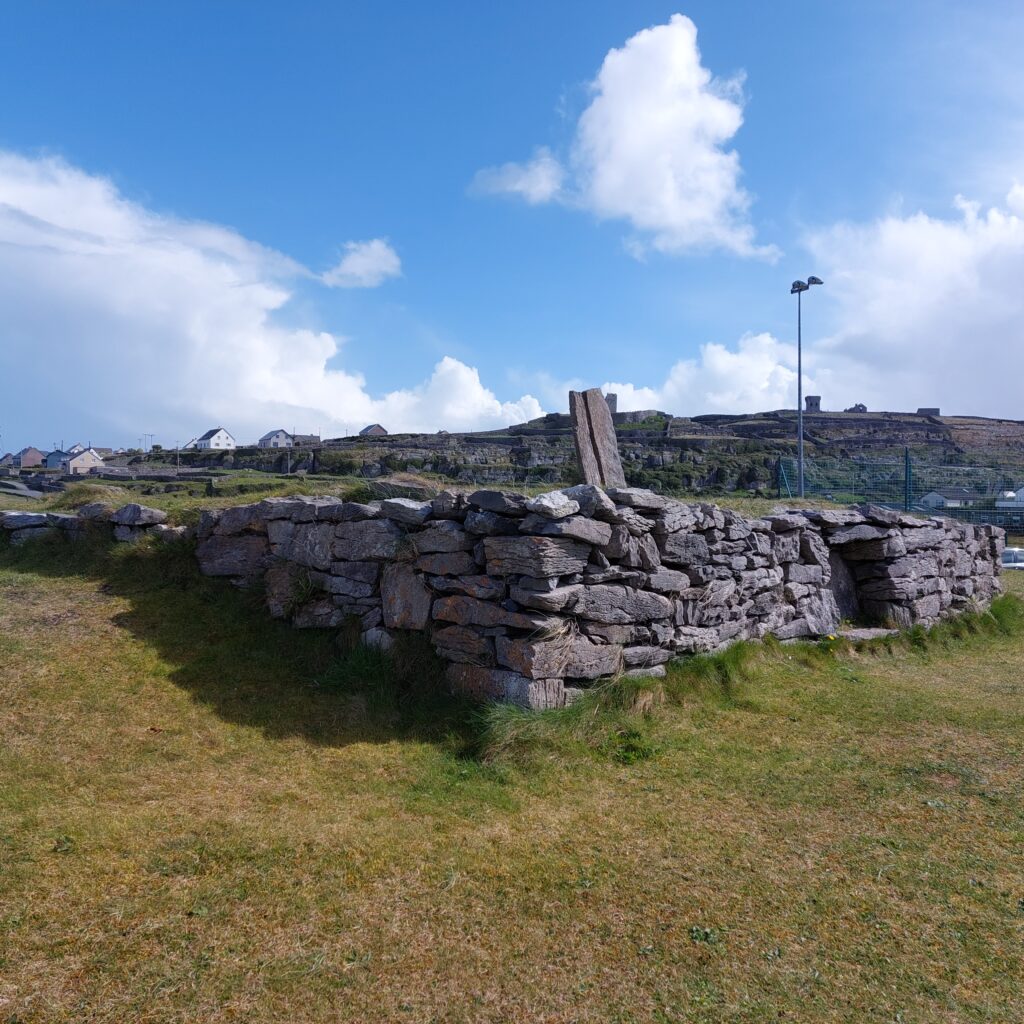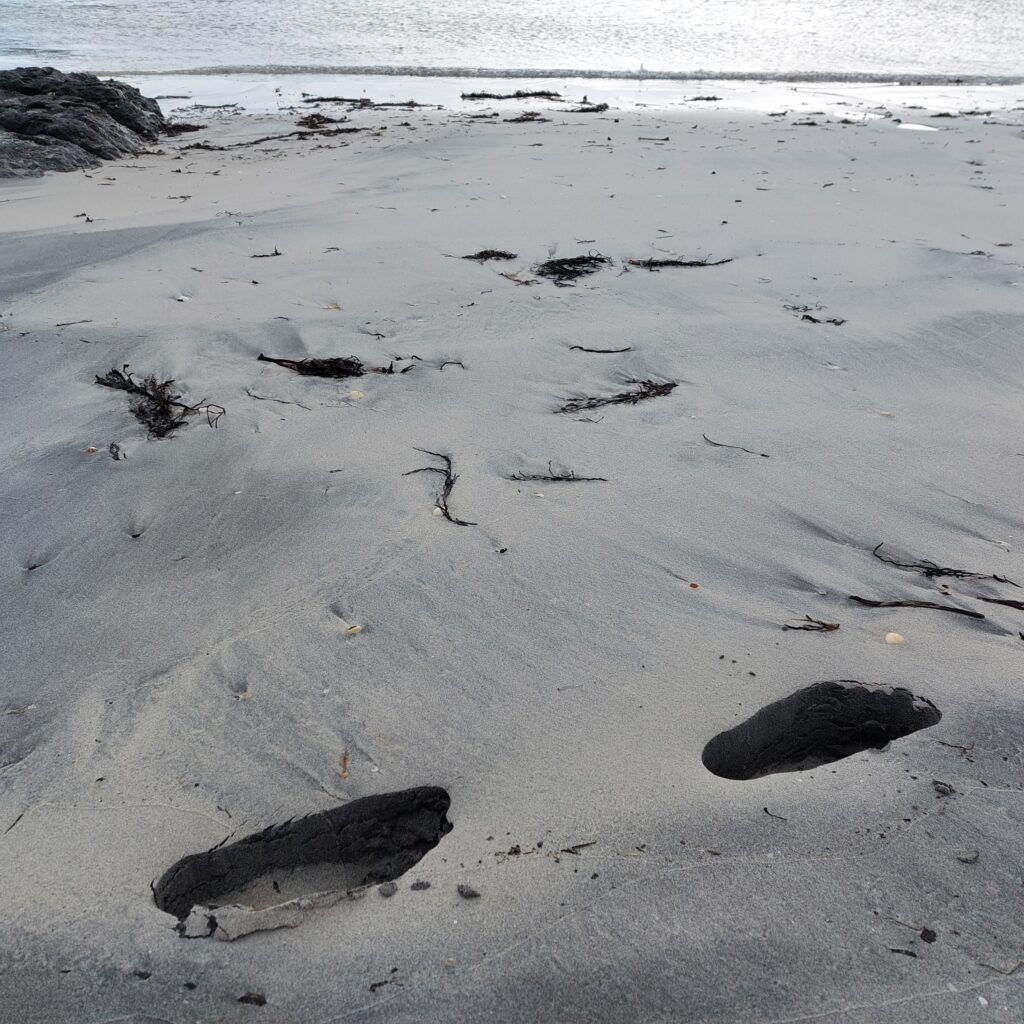Galway, on the west coast of Ireland, had close trade relations with France and Spain from the Middle Ages. Today, the city is a center for Irish language, music and culture and hosts several festivals, including food, art and film.

Many of the houses in Galway are quite old. As an example, the building that houses the pub ‘The King’s Head’, dates from the 13th century. The name refers to King Charles I, who was convicted of treason and beheaded in 1649. In this pub they sell an excellent red beer called ‘The King’s Blood’. This beer has a thick foam (head of the beer) which is reminiscent of the Guinness’ foam (made by adding nitrogen gas). And as our guide pointed out: This beer holds the ‘head’ better than King Charles I could…
But it’s not just the beer that draws you into the Irish pubs, of course. In Galway you will find live music almost everywhere!

But yes, there are some pubs that run a simplified version: 1-2 guitarists with a typical Creedence-Cash-Eagles repertoire. Finding bigger bands at play is not too difficult, either. In that case, you will certainly hear this:
And I ask you friend, what’s a fella to do
‘Cause her hair was black and her eyes were blue
So I took her hand, and I gave her a twirl
And I lost my heart to a Galway girl
… and actually – we found her! Knut could give a handshake ‘to a Galway Girl’.

In retrospect, it turned out that Knut was not very satisfied with the meeting, so maybe it’s still hope for Idun – even if she doesn’t have blue eyes? The song was first released in the year 2000, but this Galway Girl appeared to be at least 100 years old! And where was the hair? Wrapped in a shawl? No, better to stick to the song and the dream..
‘Galway Girl’ was created by the American musician Steve Earl. He spent a few years in Ireland after a troubled period in the United States. The song is written for/about Joyce Redmond, who played bodhrán on the first release. However, she is not exactly a Galway Girl, as she grew up on the Howth peninsula north of Dublin. On the other side, Joyce Redmond’s mother was from the Aran Islands (Inishmore, where we also have had a bath or two), and that is maybe close enough? Joyce had neither black hair nor blue eyes, and never became Steve Earl’s wife – despite the fact that he was married seven times to six different women. But the mood of the song is perfectly Galway-ish:
I took a stroll down the old Long Walk
On the day-I-ay-I-ay
I met a little girl and we stopped to talk
On a fine soft day-I-ay
Much of Galway’s city wall on the east side of the River Corrib was destroyed by the tsunami that followed the Great Lisbon Earthquake of 1755. But there is still a part remaining, including the so-called Spanish Arch of 1584.
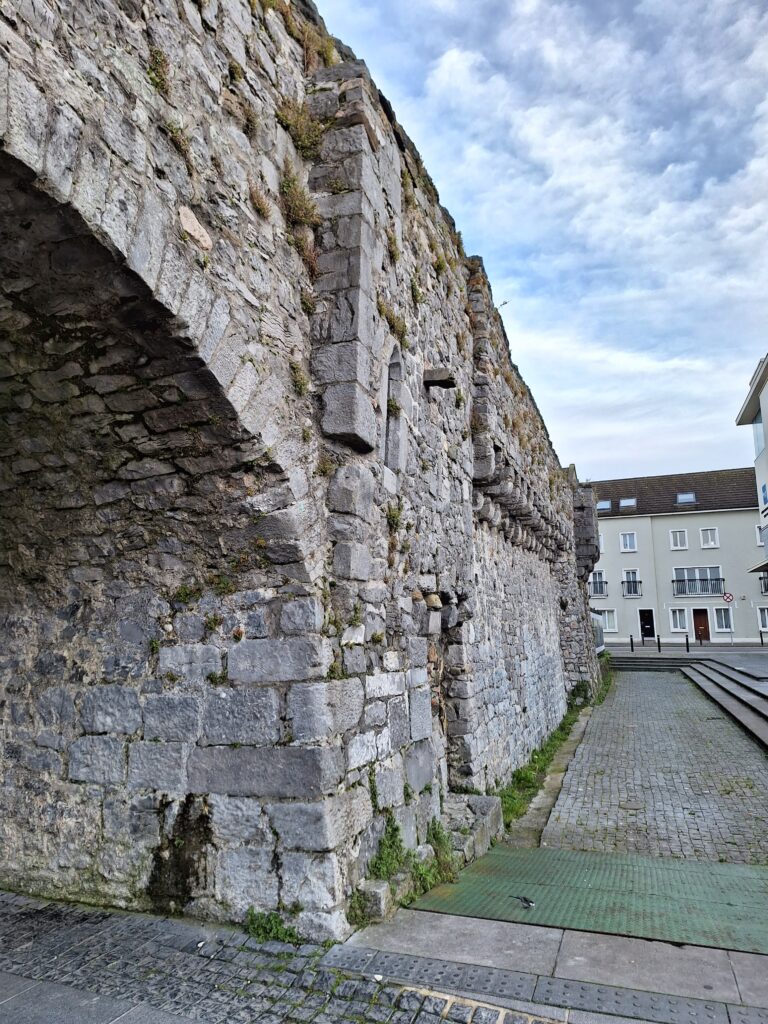
At the Spanish Arch, a major construction project is currently ongoing (2023), to protect the lower part of the city from flooding. During storms and spring floods, basements have repeatedly been filled with water, and they are now trying to do something to stop it. As a temporary measure, two water ‘sausages’ have been laid out as a dam, and on the wall of Nimmo’s restaurant you can see an art installation in the form of a fluorescent tube that shows how high the water will be at spring tide in the year 2150 – if the melting of glaciers continues as today .

If you walk along the estuary, southwards from the Spanish Arch, you will reach ‘The Long Walk’ mentioned in the song. This is a row of houses protected by masonry, and a nice place to stroll. And it is not unlikely to have a romantic encounter here. Even Ken Bruen writes beautifully about ‘The Long Walk’ in the crime novel ‘Priest’.

Actually, this trip is not so long that you shouldn’t also stop by the ‘Galway City Museum’, which is next door.

Otherwise, you can walk ‘The Long Walk’ both above and below the wall – as ‘Tobatheornottobathe’ did. On the second morning of the Galway trip, we were well informed about the condition of the river, which is not bad at all. As you know, the Corrib flows very fast, and when you add the information that there are salmons both there and in Lake Corrib above, adding the fact that the river is only 6 km long, then pollution is not a big issue. This left us with only two unsettled questions:
1) Where are the backwaters that prevent us from drifting out to sea?
2) How to get into a bathing position when the river is enclosed by both fences and water ‘sausages’?

Not far along ‘The Long Walk’ we found – lo and behold – a staircase down to the river bank, which made it easy to go back below the wall to the stairs behind Nimmo’s. We found plenty of broken glass there! It seems to be a favorite pastime to sit and drink on the edge of the wall and throw the bottles into the river. Maybe that’s how romance happens?
It was a splendid bath! The stairs were almost free from glass, and we didn’t hurt ourselves even without swimming shoes. But the current was a bit scary, so we didn’t actually swim, it was just a dip.

A dip in the rocky, swift river turned out to be just right.






